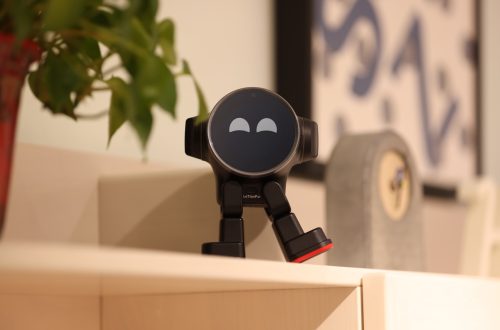Privatization Model Configuration Description and Interface Agreement
The app configuration instructions are shown in the following figure.
You need to enter the Letianpai App -> Control -> select your robot -> AI Voice Engine -> Third Party, enter the configuration of private large model information, check “Set as Voice Engine”, and when speaking to the robot, except for the robot’s basic control statements, other voices will default to the third-party private large model interface.

Note: BaseUrl (private AI model interface address) in the figure needs to support public network accessibility
Below is an explanation of the calling convention for the privatization large model interface:
Note: The interface uses SSE (Server Server Events) for streaming requests
1. Request method
POST
2. Request content type
application/json
3. Request the body to be in JSON format, with the following parameters
| Parameter Name | Type | Describe |
| app_id | string | app_id configured in the app, custom parameters |
| api_key | string | api_key configured in the app, custom parameters |
| api_secret | string | api_secret configured in the app, custom parameters |
| content | string | The requested question content |
| sn | string | The unique identifier SN of the current device |
Request Body Example:
{
"app_id":"123",
"api_key":"236",
"api_secret":"234",
"content":"How to become a product manager",
"sn":"20010136U0100"
}4. Return data format convention:
event s a fixed value : message
data is a JSON format string
The JSON format in data is as follows:
| field name | type | description |
| code | int | Return code, 0 represents normal, all other non 0 values represent failure |
| msg | string | Request to return information. If the return fails, the error message will be placed in the MSG, and the robot will report this error |
| data | object | entity content, see table below |
The structure of data entity content in JSON:
| field name | type | description |
| content | string | The answer text returned by the private large model may be a part of it |
| is_end | bool | false represents unfinished, true represents ended |
“Return example”:
event: message
data: {"code":0,"msg":"success","data":{"content":"我是","is_end":false}}
event: message
data: {"code":0,"msg":"success","data":{"content":"乐天派公司","is_end":false}}
event: message
data: {"code":0,"msg":"success","data":{"content":"研发的","is_end":false}}
event: message
data: {"code":0,"msg":"success","data":{"content":"私有化","is_end":false}}
event: message
data: {"code":0,"msg":"success","data":{"content":"大模型","is_end":true}}5. demo sdk like below:
Currently, only the Golang version is available, and other versions will be provided later
package main
import (
"encoding/json"
"fmt"
"io"
"io/ioutil"
"net/http"
"strings"
"time"
)
type Req struct {
AppId string `json:"app_id"` // appid configured in the app
ApiKey string `json:"api_key"` // apikey configured in the app
ApiSecret string `json:"api_secret"` // apisecret configured in the app
Content string `json:"content"` // Request text for ai models
Sn string `json:"sn"` // Machine unique code
}
type Data struct {
Content string `json:"content"` // Return text content
IsEnd bool `json:"is_end"` // Is it over
}
type RespData struct {
Code int `json:"code"` // Status code
Msg string `json:"msg"` // Return prompt information
Data *Data `json:"data"` // The returned structural data
}
func getSendMsg(code int, msg, content string, isEnd bool) (string, error) {
d := &Data{
Content: content,
IsEnd: isEnd,
}
respD := &RespData{
Code: code,
Msg: msg,
Data: d,
}
respB, err := json.Marshal(respD)
return string(respB), err
}
var answerListAll = [][]string{
[]string{
"我是",
"乐天派公司",
"研发的",
"私有化",
"大模型",
},
[]string{
"我不知道",
"你说的",
"是什么,",
"我只是一个",
"私有化大模型",
},
[]string{
"沁园春·雪",
"【作者】毛泽东 ",
"北国风光,千里冰封,万里雪飘。",
"望长城内外,惟余莽莽;大河上下,顿失滔滔。",
"山舞银蛇,原驰蜡象,欲与天公试比高。",
"须晴日,看红装素裹,分外妖娆。",
"江山如此多娇,引无数英雄竞折腰。",
"惜秦皇汉武,略输文采;唐宗宋祖,稍逊风骚。",
"一代天骄,成吉思汗,只识弯弓射大雕。",
"俱往矣,数风流人物,还看今朝。",
},
[]string{
"要成为一个优秀的产品经理,必须在心里要有一个“大我”和一个“小我”,可能你要经历这两个过程的磨练,才能找到原因背后的原因。",
"什么是“大我”?我的意思是,一个产品经理要把自己当成CEO。在《兄弟连》里面的连长的绰号就是CEO。",
"产品经理要对一个产品负责,虽然挂的是经理的头衔,但行驶的是总经理的职责。",
"因为要对产品负责,产品经理还要经常去协调很多部门,要去推动很多不归他管的人和事,比如要跟设计打交道,要跟技术打交道,要跟测试打交道,还要去了解用户的想法,还要去跟市场谈支持。",
"产品经理要操的心,一点也不比一个总经理少。所以,我说一个优秀的产品经理首先要把自己当成一个CEO,既要负责执行、推动(Executive),也要负责用户体验(Experience)。可能别人不拿",
"你当回事,但你自己心里的有一个“大我”。你对一个产品负责,你的title不重要,但是你一定要把这个责任担负起来。",
"所以,优秀的产品经理不必在意今天管了多少人,不必在意自己的头衔是高是低,关键最是你能不能利用公司里的资源,不管采用什么手段,最后做出来一个好产品。",
"上亿的用户选择使用你做出来的产品,就是对产品经理最大的认可。",
"在其他相同的条件下,你做的产品有上亿用户用,他做的产品只有几百万人用,那么你就比他要优秀。",
"可能你会说,我是想做一个优秀的产品经理,但我太年轻,没什么资历。我觉得,产品经理要非常自信,你要有这种气势。",
"一个优秀的产品经理心中有“大我”,但同时还得不断地“小我”,甚至要“忘我”。这就是说,",
"产品经理要忘掉自己。根据我的经验,产品经理最容易犯的几个错误,包括今天我都还在犯,就是产品做着做着,就不是给用户做产品,而是给自己做产品,给同事做产品,给领导做产品了。",
"所以,产品经理心中要做到“小我”,甚至“忘我”,就是产品经理必须身临其境,把自己当成一个典型用户,让自己精神分裂,这样才能体会用户心中真正的想法和需求。",
},
}
func handleSSE(w http.ResponseWriter, r *http.Request) {
// Set response header to specify the Content Type of SSE
w.Header().Set("Content-Type", "text/event-stream")
w.Header().Set("Cache-Control", "no-cache")
w.Header().Set("Connection", "keep-alive")
// read body
body, err := ioutil.ReadAll(r.Body)
if err != nil {
http.Error(w, "Error reading request body", http.StatusInternalServerError)
return
}
// to deal body
fmt.Printf("收到请求的body数据:%s\n", body)
var reqB Req
err = json.Unmarshal(body, &reqB)
fmt.Println("reqB:", reqB)
answerList := answerListAll[0]
content := reqB.Content
fmt.Println("content:", content)
// Simulate AI model matching answers
if strings.Contains(content, "是谁") || strings.Contains(content, "大模型") {
answerList = answerListAll[0]
} else if strings.Contains(content, "园春") {
answerList = answerListAll[2]
} else if strings.Contains(content, "产品经理") {
answerList = answerListAll[3]
} else {
answerList = answerListAll[1]
}
// Simulate real-time data push
for idx, partAnswer := range answerList {
isEnd := false
if idx == len(answerList)-1 {
isEnd = true
}
respStr, err := getSendMsg(0, "success", partAnswer, isEnd)
if err != nil {
respStr, _ = getSendMsg(1, "Error in obtaining return information", "", true)
}
SendEventMessage(w, "message", respStr)
// Simulated delay added, real calls need to be removed
time.Sleep(500 * time.Millisecond)
}
}
// Send event messages
func SendEventMessage(w http.ResponseWriter, eventType, eventData string) {
// Construct a message in Event Source format
message := "event: " + eventType + "\n"
message += "data: " + eventData + "\n\n"
fmt.Println(message)
// Write the message to the response body
_, err := io.WriteString(w, message)
if err != nil {
// Error occurred, stop sending messages
return
}
// Refresh response subject to ensure data is sent
flusher, ok := w.(http.Flusher)
if ok {
flusher.Flush()
}
}
func main() {
http.HandleFunc("/sse", handleSSE)
// Start the web service and listen on thelocalhost:8012
fmt.Println("server is listening : http://127.0.0.1:8012")
if err := http.ListenAndServe(":8012", nil); err != nil {
fmt.Println("Error starting server:", err)
}
}




